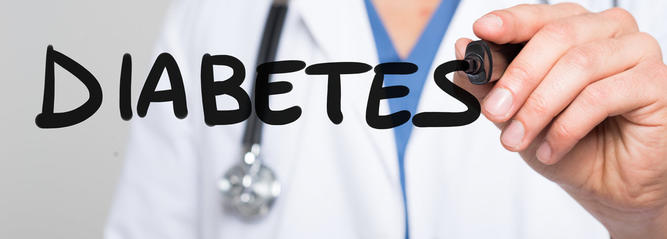What is diabetes?
Simply put, diabetes is a condition that occurs when your blood glucose, or blood sugar, is too high. But how does that happen, and what does it mean?
Simply put, diabetes is a condition that occurs when your blood glucose, or blood sugar, is too high. But how does that happen, and what does it mean?

About 23 million Americans have been diagnosed with diabetes—7% of the population.2 Among them are distinct sub-types:
Type 1 diabetes is caused by the immune system destroying the insulin-producing cells in the pancreas. Type 2 diabetes has a variety of contributors—genes, lifestyle factors, obesity, and insulin resistance.7 But the signs of diabetes can be similar for each.7
Talk to your healthcare professional if you think you have noticed signs of diabetes, so you can begin treatment right away.
Sign up for Accu-Chek news and offers
Get emails sent directly to your inbox with the latest updates and deals on Accu-Chek products.
1The National Institute of Diabetes and Digestive and Kidney Diseases. What is diabetes? Available at: https://www.niddk.nih.gov/health-information/diabetes/overview/what-is-d.... Accessed June 22, 2018.
2Centers for Disease Control and Prevention. National Diabetes Statistics Report, 2017. Available at: http://www.diabetes.org/assets/pdfs/basics/cdc-statistics-report-2017.pdf. Accessed June 22, 2018.
3American Diabetes Association. Type 1 diabetes. Available at: http://www.diabetes.org/diabetes-basics/type-1/. Accessed June 22, 2018.
4American Diabetes Association. Facts about type 2. Available at: http://www.diabetes.org/diabetes-basics/type-2/facts-about-type-2.html. Accessed June 22, 2018.
5Laugesen E, Østergaard JA and Leslie RDG. Latent autoimmune diabetes of the adult: current knowledge and uncertainty. Diabet Med. 2015;32(7): 843-852. Available at: https://www.ncbi.nlm.nih.gov/pmc/articles/PMC4676295/. Accessed June 22, 2018.
6American Diabetes Association. What is gestational diabetes. Available at: http://www.diabetes.org/diabetes-basics/gestational/what-is-gestational-.... Accessed June 22, 2018.
7The National Institute of Diabetes and Digestive and Kidney Diseases. Symptoms and causes of diabetes. Available at: https://www.niddk.nih.gov/health-information/diabetes/overview/symptoms-.... Accessed June 22, 2018.
Accu-Chek Newsletter
Get diabetes management tips and news delivered right to your inbox.